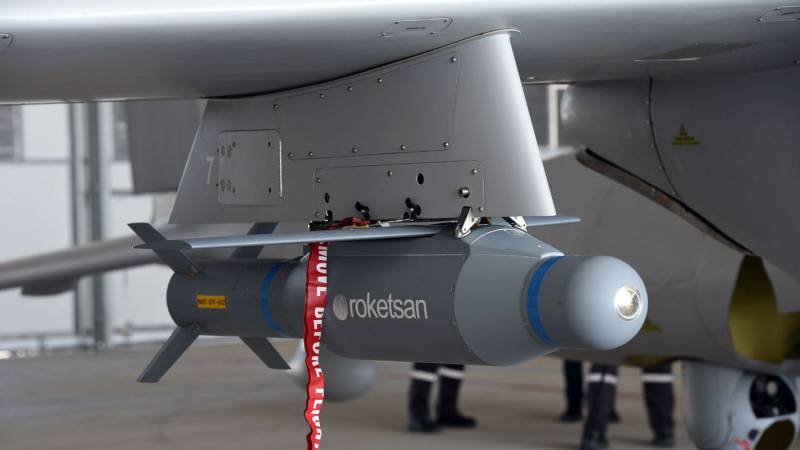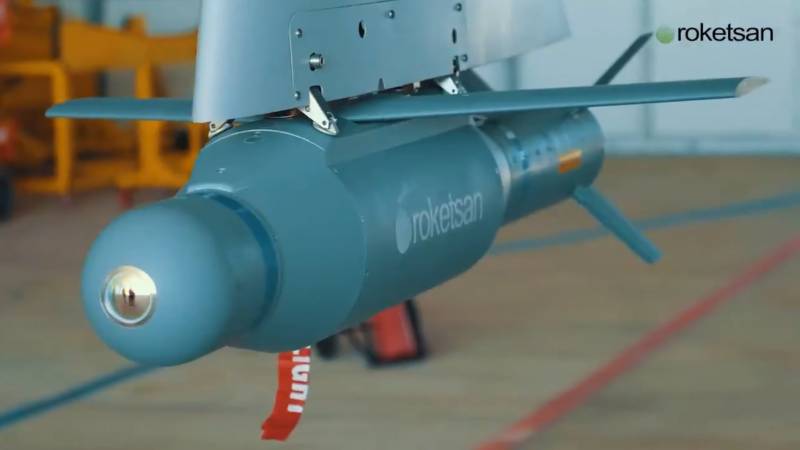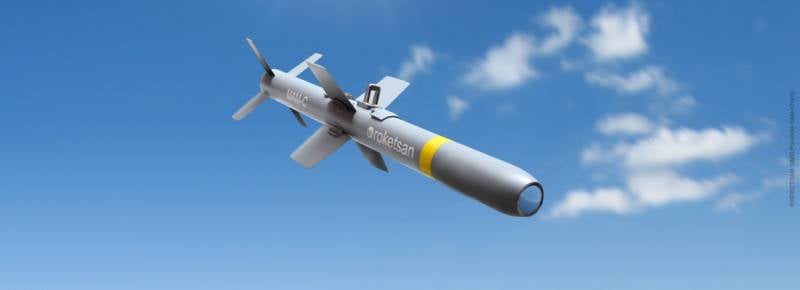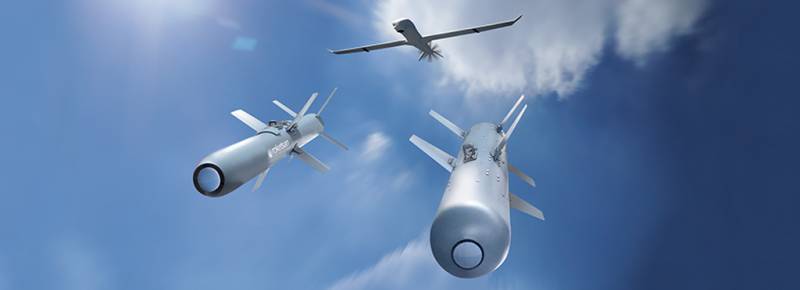Roketsan MAM-T bomb. New weapon for "Bayraktars"
Modern reconnaissance and strike UAVs of Turkish production are capable of carrying and using guided bombs of the MAM family from Roketsan A.Ş. Within this line, three types of ammunition have been created with different characteristics and capabilities. The newest of them, MAM-T, reached the stage of flight tests a few days ago. By the end of the year, it is planned to bring it to the required conditions, put it into production and put it into service.
Third in the family
The MAM series (Mini Akıllı Mühimmat - Smart Micro-Ammunition) was developed by Roketsan specifically for use in unmanned aerial vehicles. aviation... The main goal of the project was to create ammunition with high combat effectiveness and low weight, corresponding to the limitations of existing UAVs.
For example, the most famous and widespread drone Bayraktar TB2 is capable of carrying only 150 kg of weapons, which does not allow it to use the main types of Air Force bombs. Light combat aircraft, which could also perform strike missions, face similar constraints.
Until recently, the MAM family had only two ammunition with different tactical and technical characteristics. A MAM-C bomb with a length of less than 1 m and a mass of 6,5 kg was proposed, carrying a high-explosive fragmentation warhead and a semi-active laser homing head. The range of an ultralight bomb was limited to 8 km. A heavier (22 kg) MAM-L aerial bomb was developed with the possibility of using satellite navigation, fragmentation or thermobaric warheads. The flight range was increased to 14 km.
A few days ago, Roketsan disclosed information on a new family project - MAM-T. This bomb differs from the existing ones in its increased size and weight, as well as a number of other advantages of a combat and technical nature.
On April 22, the development company announced the start of flight tests of a new weapons. The promising UAV Bayraktar Akıncı dropped an experienced MAM-T bomb and successfully hit the intended target. It is noteworthy that this was the first "combat" episode for both the new bomb and drone He has never used weapons before.
Although the tests have just started, the customer and the developer are very optimistic. They plan to complete the development of the ammunition and establish mass production by the end of the year. At the same time, it is planned to complete the development of a new UAV Akıncı, thanks to which a whole aviation complex will enter service.
Technical features
The new aerial bomb of the MAM series differs markedly from its predecessors both in its design and capabilities, and in terms of combat use. So, the carriers of this product should be not only the UAVs of existing and new types, but also fighter-bombers of available types. Due to this, it is planned to more fully reveal the potential of the bomb, as well as improve the capabilities of tactical aviation.
Externally and in design, the MAM-T is unlike other light bombs. She received a hemispherical head fairing, an extended center section and a cylindrical tail section with X-shaped rudders. A swept wing is installed on top of the wide part of the hull. Curiously, the wing is fixed and cannot be folded for transportation.
The maximum diameter of the bomb body reaches 230 mm, the total length is 1,4 m. The mass is declared at 94 kg; the weight of the high-explosive fragmentation warhead is not specified. The head fairing houses a semi-active laser seeker. Also, the bomb is equipped with an inertial and satellite navigation system, which ensures flight to the target area before the seeker is turned on. The possibility of searching for and hitting stationary and mobile objects is declared.
The key flight characteristics of the MAM-T depend on the airborne platform - the altitude and speed of its flight. Existing and promising UAVs are capable of "throwing" a bomb at 30 km. For light strike aircraft, this parameter is 60 km, and supersonic fighters can attack a target from 80 km.
New to the Air Force
The MAM-T bomb is designed to engage a wide range of ground targets, from manpower and unprotected vehicles to armored vehicles. At the same time, a number of key features and capabilities should ensure high combat performance and flexibility of use.
It is assumed that in the Air Force's nomenclature of ammunition, the new bomb will occupy an intermediate place between light MAM-C / L products and full-size tactical aviation bombs. It can be used in cases where light bombs show insufficient performance, and other products are excessive or inexpediently expensive.
The MAM-T bomb will give the most important and interesting results in the context of the development of unmanned aircraft. First of all, for the first time, weapons with a range of 30 km will appear in service with Turkish UAVs. This will reduce the risks associated with enemy air defense. The heavier bomb compares favorably with its predecessors in its increased power, due to which the effectiveness of use is increased and the consumption of ammunition is reduced.
However, new opportunities come at the cost of some restrictions. So, in terms of dimensions and weight, the MAM-T corresponds to the capabilities of the Bayraktar TB2 UAV, but it will be able to carry only one such bomb. Larger and heavier drones will be able to carry multiple ammunition, incl. as part of a mixed ammunition. So, for the UAV Akıncı, a carrying capacity of more than 1300 kg is declared with the placement of weapons at 8 suspension points.
From the point of view of tactical and technical characteristics and fields of application, MAM-T is analogous to some foreign developments. So, in caliber this bomb is similar to the American product GBU-53 / B StormBreaker, although it loses to it in terms of flight range, GOS configuration, etc. Products with a similar look, incl. designed for UAVs are created in Europe and Russia.
Great future
In recent years, Turkey has been paying great attention to the development of unmanned aircraft, including the most complex reconnaissance and strike direction. At the same time, new types of weapons are being developed for UAVs. A number of such products have already been brought into service in the troops, and new ones are expected to be adopted in the near future.
The existing UAVs and weapons for them have shown themselves well in recent conflicts. With a competent organization of a combat mission, they allow you to effectively hit various targets with minimal risks. At the same time, the available bombs are not always able to cope with the task at hand, which is why it is necessary to involve tactical aviation with other ammunition. It is expected that new drones and MAM-T bombs will at least partially solve this problem.
Obviously, the Bayraktar Akıncı UAV and the MAM-T bomb will not be idle for it. The Turkish command will try to use them in real operations as soon as possible - to achieve superiority over the enemy and to advertise on the international market. These products are expected to enter service by the end of the year, and it is very likely that soon after that it will be possible to make the first assessments of the combat use and the real capabilities of the drone and the bomb for it.





Information